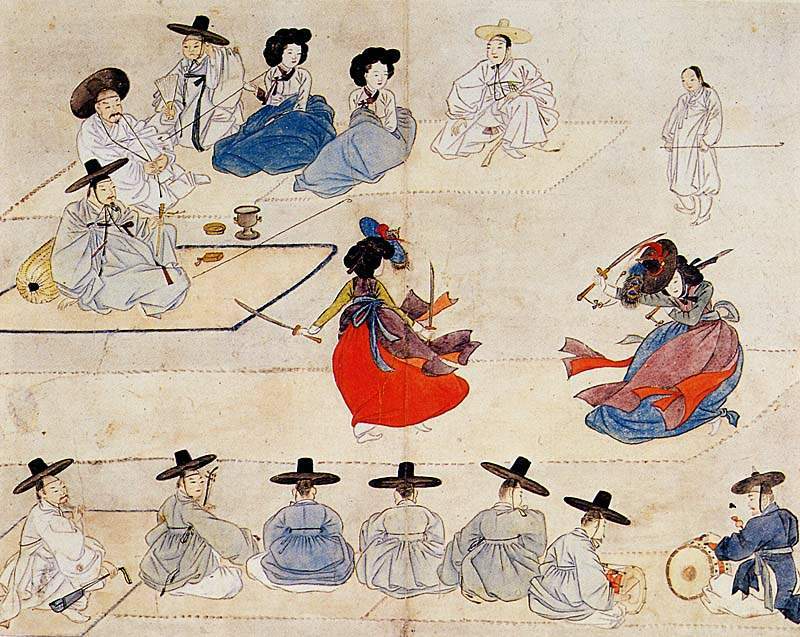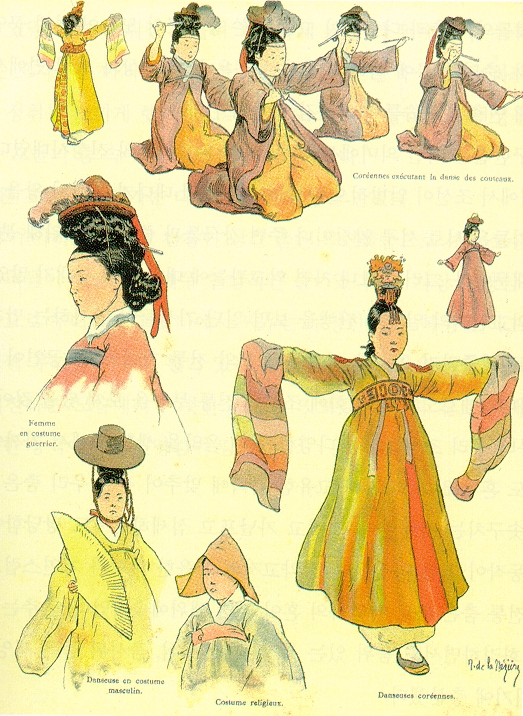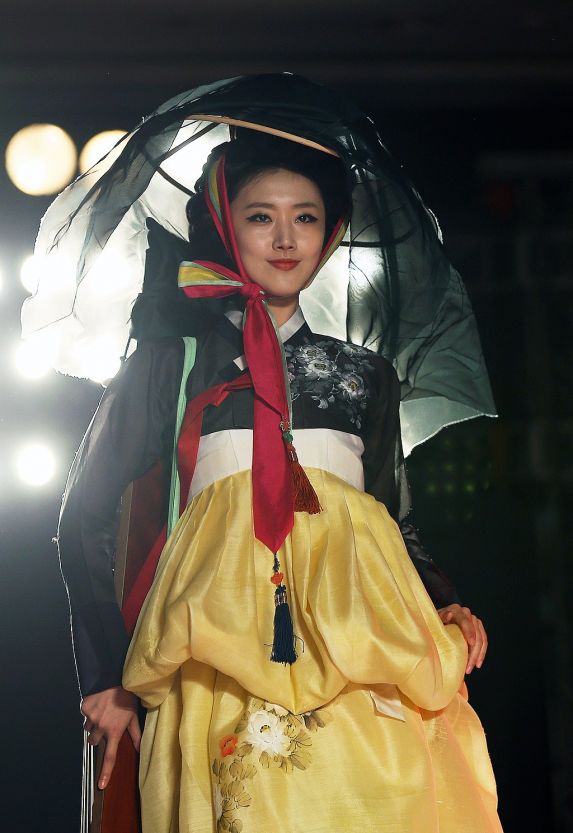The Origins of Kisaeng
Skilled, Beautiful, and Much More Entertaining than Business Matters
In ancient times Chinese, Koreans and Japanese businessmen and government officials used the sensual appeal and entertainment skills of young women as integral elements in creating and maintaining their professional relationships.
Early in Korea’s “Three Kingdoms Period” [roughly 57 B.C. to 669 A.D.] troupes of attractive young women trained extensively in singing, dancing, poetry, music and more as entertainers and became permanent parts of the kings’ courts and the various ministries of the three governments.
These young women came to be known as kisaeng (kee-sang), or “skilled persons,” and their numbers and influence increased significantly over time. In addition to entertaining their patrons and their parties and guests, the kisaeng were also dispatched to entertain troops who were stationed in remote areas.

The custom first appeared very early in China, at least three thousand years ago, where it was centered on the Imperial Court and the highest echelons of government. Chinese courts maintained large numbers of women to serve and entertain higher officials and guests. With the aid of “scouts,” the most beautiful girls in Korea and other tributary states were sought out and sent to China. Similarly, a geisha is the Japanese counterpart to kisaeng.
The fortunes of the kisaeng waxed and waned over the centuries. Kisaeng originated in the low slave class where, at one point in history, they were made to serve as mistresses and prostitutes and correspondingly, had since held a controversial place in society. However, their heyday in which their influence and respectability was truly valued, arrived during the Joseon Dynasty, which began in 1392 and lasted until the end of the 19th century.
During this period, kisaeng rose to become highly educated, lavishly and colorfully dressed and the most elite women in the country, their training and upkeep evolved into a major part of the nation’s commerce. [History records show that in the 1870s over 10,000 of them were attached to the Imperial Court!]

In modern day Korea, the role of the kisaeng has nearly vanished and become less prevalent however, the institution exists on a small scale in ways that appreciate the teachings and practices of the culture. Kisaeng houses are still frequented by people doing business or government officials who use them personally and to host the company of foreign guests.
Korean hosts had invited their foreign counterparts to kisaeng houses as a way of breaking down the cultural barriers between them. They believe from their long history that interacting together while talented and attractive women are present, is the fastest way to accomplish that goal.
[Revised and edited by Loren Meza. 8/25/2022]
Boyé Lafayette De Mente (1928-2017) was involved with Asia since the late 1940s as a member of a U.S. intelligence agency, journalist and editor. He was a graduate of Jochi University in Tokyo, Japan and Thunderbird School of Global Management in Glendale, Arizona, United States. In addition to his books on the business practices, social behavior, and languages of China, Japan, Korea, and Mexico, he wrote extensively about the plague of male dominance and the moral collapse of the United States and the Western world. His 60+ books are available from Amazon. com












